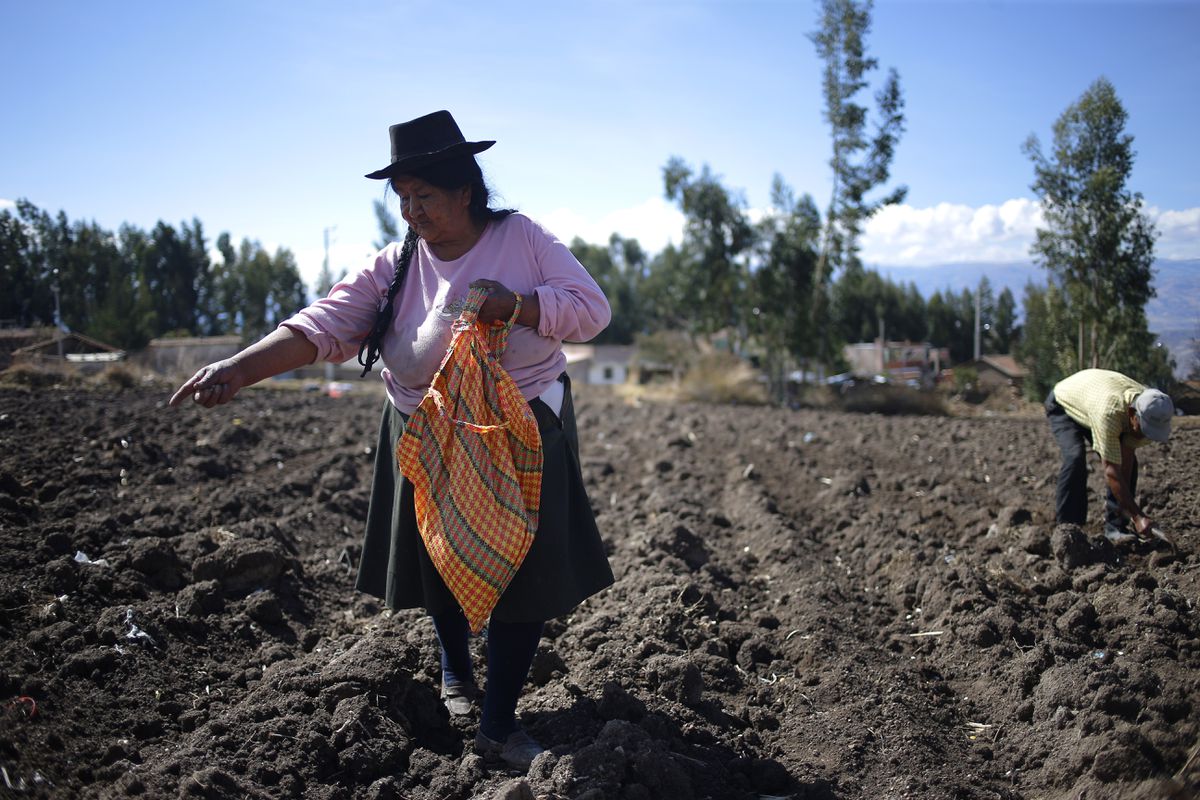“Don't be manipulated,” the uniformed man tells a group of people in a market in Ayacucho, in southern Peru.
He introduces himself as a General of the National Police, according to the video captured on Monday by one of those present.
“Tomorrow I will start arresting everyone who is mobilizing.
I have come here, as I am going to all the markets, indicating that they function normally," warned the authority.
In the midst of a deep political crisis, and the social protests that accompany it, Peru seeks to ensure that the economy, both macro and micro, runs its course.
The sixth largest economy in Latin America has been an example to follow in recent decades, reducing poverty, increasing production, and it has done so, according to specialists, separating the management of politics and the economy in 'two ways'.
However, as the protests in Chile in 2019 and in Colombia last year showed, demonstrations that block roads and paralyze production lines leave unavoidable economic detriment, and is often difficult to restore.
Since December 7, when former President Pedro Castillo was arrested after a failed self-coup attempt, economic losses have accumulated for 3,200 million soles (about 839 million dollars), according to the National Society of Industries (SNI).
If the discontent does not calm down, the SNI warned in a statement, the damage could reach 6.4 billion soles (1.6 billion dollars).
Among the most affected sectors are agriculture and mining, which represent the most important economic activities in the regions of Ica, Arequipa, Puno, Apurímac and Cusco, where the protests have been most violent.
Twenty-eight people have died, 22 of them directly due to the repression and the rest due to accidents or due to roadblocks.
Ten of them were from Ayacucho, the region hardest hit and where the General visited market by market, warning of an arrest if the economy did not return to normal.
“That the protest is taking place in the southern Andes is no coincidence,” says Luis Alberto Arias, an economist and former vice president of the Central Reserve Bank of Peru.
“It is the region with the greatest poverty, where it has been greatly reduced but persists in 40% of the population, it is very high.
Reducing poverty is the great challenge we have because otherwise social instability will persist and the risk of falling into a radical government will persist”, adds the specialist.
The view from abroad, particularly from investors in global markets, is different.
After the exchange rate fluctuated sharply on the day of the self-coup, it has stabilized since then, and even Peru's sovereign bonds, which are internationally traded in dollars, have risen slightly in price.
This is because for decades, institutions like the central bank have functioned autonomously, explains Arias, also a professor at the Pontifical Catholic University of Peru and the University of Lima.
Credit rating agency Fitch put Peru's rating on a negative outlook in October, after months of political instability in the country.
In the World Bank's global governance ranking, Peru fell from the 45th to the 41st percentile, reflecting the lack of consensus between Congress and the Executive in the last two years.
"In the short term, the weak political position of the new government could increase the potential for a shift towards fiscal populism and expansion of spending, although Peru has a history of containing the deficit during previous periods of greater political instability," Fitch said. it's a statement.
An example of a recent populist measure, according to Fitch, has been allowing early pension withdrawals.
"The current congress voted to allow such withdrawals in May of this year after another five rounds in 2020-2021," the rating agency highlighted, "such policies would be positive for growth in the short term, but they would also contribute to inflation and higher current account deficit.
More pension withdrawals would undermine the depth of the local market and negatively affect corporate and government financing options.
Peru will end the year with a deficit close to 1.6% of the Gross Domestic Product (GDP), which could be the lowest in all of Latin America.
Peru's President Dina Boluarte, who replaced Castillo on December 7, has given several television interviews, some of them in the languages spoken in the Andean communities where Castillo's departure has been protested.
"This has contributed to a relative financial calm," says Arias, "that the president is perceived as someone more towards the center, that she has reached an agreement with the center right to assume command and that democratic institutions such as the Ombudsman, the Constitutional Court, the same Armed and judicial Forces, all of this has shown Peru, beyond the opinions of one side or the other, that the institutions worked”.
The Peruvian Congress, one of the most discredited institutions in the country, voted yesterday to call elections in April 2024, for which the parliamentarians and the president will remain in office for 20 more months.
Subscribe to continue reading
Read without limits
Keep reading
I'm already a subscriber

